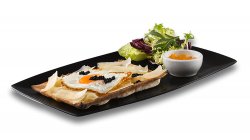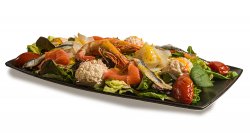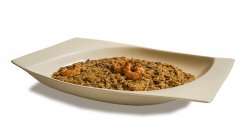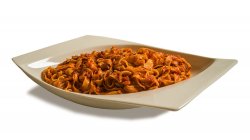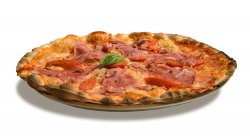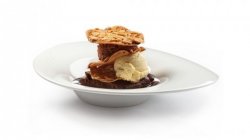

Discovering Valtellina
We are in Valtellina, a valley famous for the unspoiled beauty of Stelvio Natural Park, its numerous natural hot springs, and its impressive culinary tradition, and also for hosting the World Ski Championships and other famous international winter sport events! Livigno, Bormio and Santa Caterina di Valfurva are three of the most famous towns in these beautiful valleys, very popular with tourists.
Embedded in the Alps, in the northernmost part of Italy, Valtellina is located less than 100 km from Milan, and borders with Switzerland. This area is heavily influenced by ancient gastronomic traditions, and well known for its agrifood produce, certified by the PDO and PGI labels. Prominent among these are the Casera and Bitto cheeses, the Olden and Stark apple varieties and the prestigious AOC Valtellina Superiore and Rosso di Valtellina wines. You can also enjoy a large variety of cold cuts, including the PGI-certified Bresaola ham, which is made from the best top rounds of beef legs, wrapped in natural gut and left to dry for four to eight weeks covered in salt.
The cuisine in these valleys perfectly reflects the complex historical events that have taken place since the Romans first conquered it in the 1st century B.C. French influence in Valtellina began after Charlemagne conquered the valley. In 1335, the territory was annexed to the court of the House of Sforza, who were considered the "rulers" of the city of Milan. In 1512, the French reconquered the area, imposing the Protestant religion on the people. This resulted in numerous conflicts with the Catholics, which finally led to a bloody confrontation in 1612, known as the Sacra Matanza. Valtellina was in ruins until the Napoleonic era, when it was handed over to Austria. In 1859, it joined the army of General Giuseppe Garibaldi, who drove the Austrians out of the territory, enabling its annexation to Lombardy.
Throughout the centuries, cattle, game and river fish could solely be eaten by noblemen and religious leaders, who typically spiced the meat with bay leaf, rosemary or juniper, and prepared it grilled or en brochette. Meanwhile, the commoners had to eat food made with wheat flour, corn, berries, mushrooms and chestnuts. The latter was often mixed with flour to make what is known today as chestnut gnocchi. This hearty recipe, cooked with chicken broth, butter and cheese, became popular quickly and soon turned into a local culinary tradition. It is because of its heartiness, humble ingredients and artisan production that Valtellinan cuisine is appeals to all palates.
So much so that sciatt is one of the most popular antipasti in the valley. This local specialty is a fritter filled with cheese, seasoned with a shot of brandy diluted with sparkling water or beer. In the local dialect, "sciatt" means toad, perhaps owing to the noise it makes when you bite into it. One of the most popular local dishes is pizzoccheri, which is similar to, but shorter than tagliatelle. It is made from 80% buckwheat flour and 20% wheat flour. It is cooked with vegetables, usually Swiss chard and cabbage, and diced potatoes. Casera and Grana Padano cheeses are added at the end, when the dish is seasoned with garlic and sage "browned" in butter.
Valtellina cuisine is influenced by Alpine tradition, i.e. it is a protein-rich diet. Accordingly, we propose an extraordinarily savory venison tagliata with grappa, raisins and pine nuts as second course. In Italy, tagliata refers to how well the meat should be cooked and how it is cut, which in this case is usually medium and in thin slices. Grappa is a variety of grape marc with an alcohol content between 38-60 percent, distilled from the solid parts of the grape that are discarded during harvest. This spirit is highly valued in mountain areas with extreme temperatures. Grappa is often used for cooking.
The "Trenino Rosso del Bernina" railway, listed as a UNESCO World Cultural Heritage in 2008, is one of the interesting attractions you will find in these stunning Lombard valleys. The railway snakes up the mountain slopes, linking the Italian Alps with Switzerland, passing through valleys that are inaccessible by car. Furthermore, when you travel from the village of Poschiavo (1,014 m) to Alp Grum (2,091 m), also known as "Glaciers Terrace", you can admire the famous "Pinocchio”. When seen from two different angles, the Pizzo de Teo, a 3,049 m high mountain, resembles the famous wooden puppet looking skyward. This trip is highly recommended, as it is the highest railway in Europe across the Alps with the steepest declines in the world. We will learn more about this spectacular area in northern Italy as we continue our journey through the Valtellina during our next leg towards its capital: Sondrio.
46.1633869, 9.8447202
Valtellina
Valtellina is an Alpine area in northern Lombardy in Italy. It covers most of the province of Sondrio. It stretches from the upper valley of the River Adda to its mouth in Lake Como. The main city -and capital- is Sondrio.
City: 180.000 hab.
Surface area: 3.212 kmª
Categories
